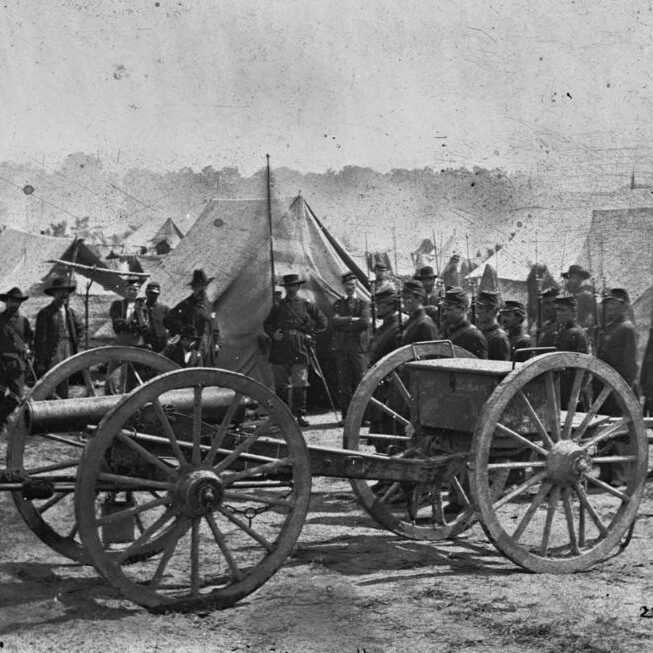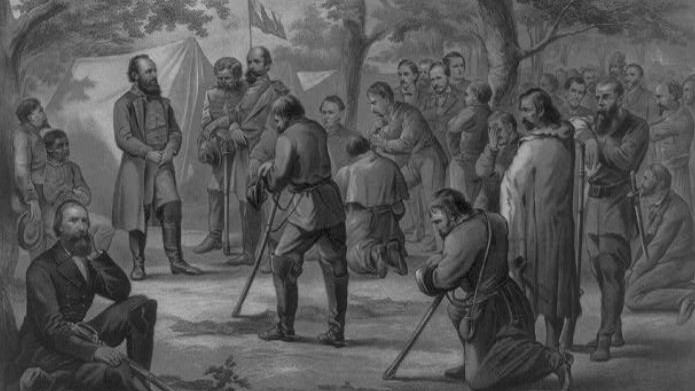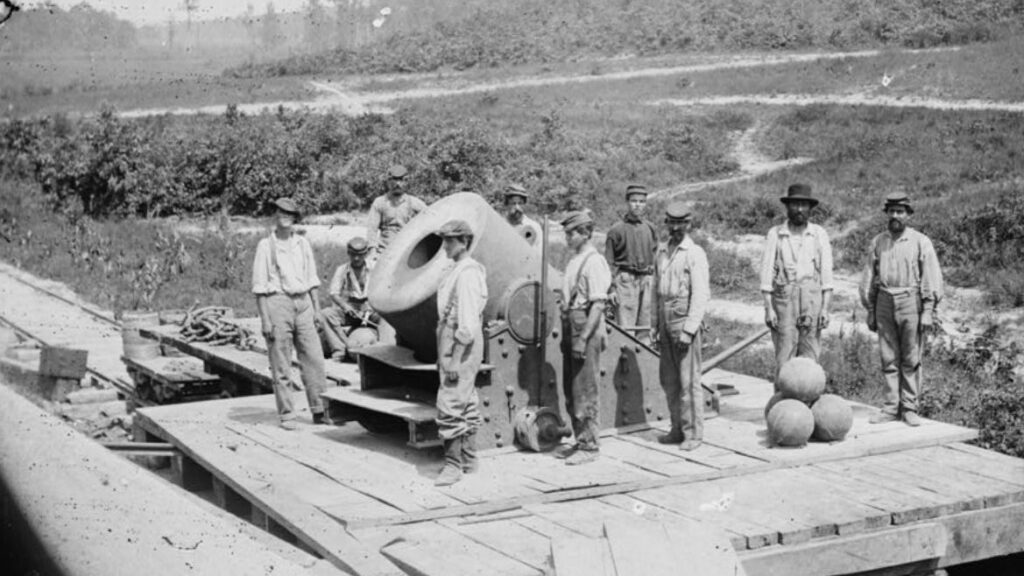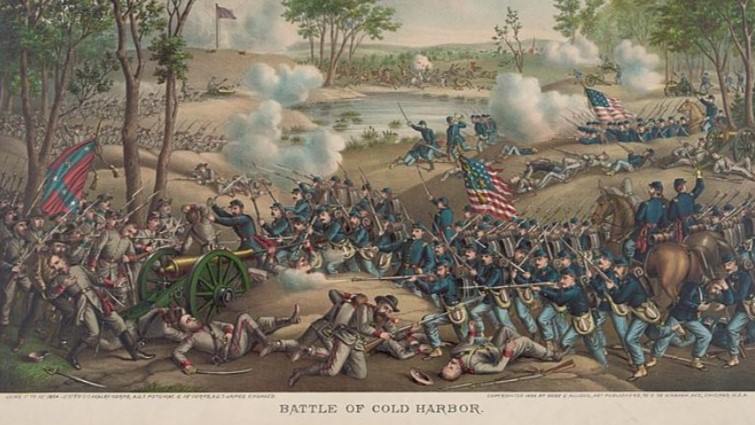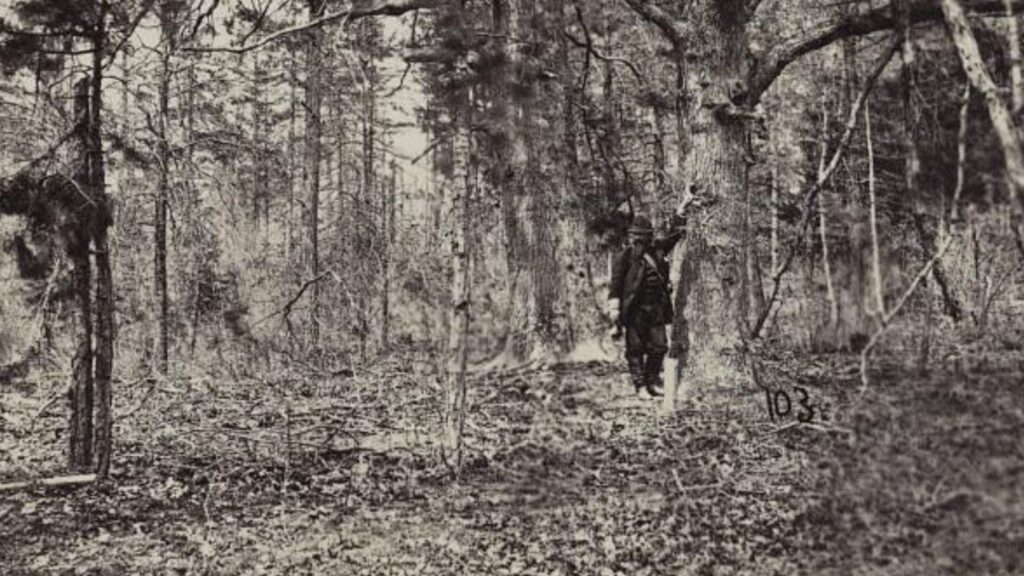The Civil War Prisoner of War Camps were brutal.
The American Civil War saw unfathomable bloodshed and suffering. Hundreds of thousands perished on the battlefields. But even more brutality awaited those unfortunate enough to be captured.
Both sides established prisoner of war (POW) camps to house enemy captives. However, many of these camps devolved into hellholes that rivaled the horrors of the battlefield. Rife with overcrowding, disease, starvation, exposure, and cruelty, these camps left permanent scars.
Here are five of some of the most brutal Civil War POW camps whose names still evoke nightmares.
1. Andersonville Prison
Few places compare to the horrors witnessed at Andersonville, one of the most notorious Confederate Prisoner of War Camps located in southwest Georgia.
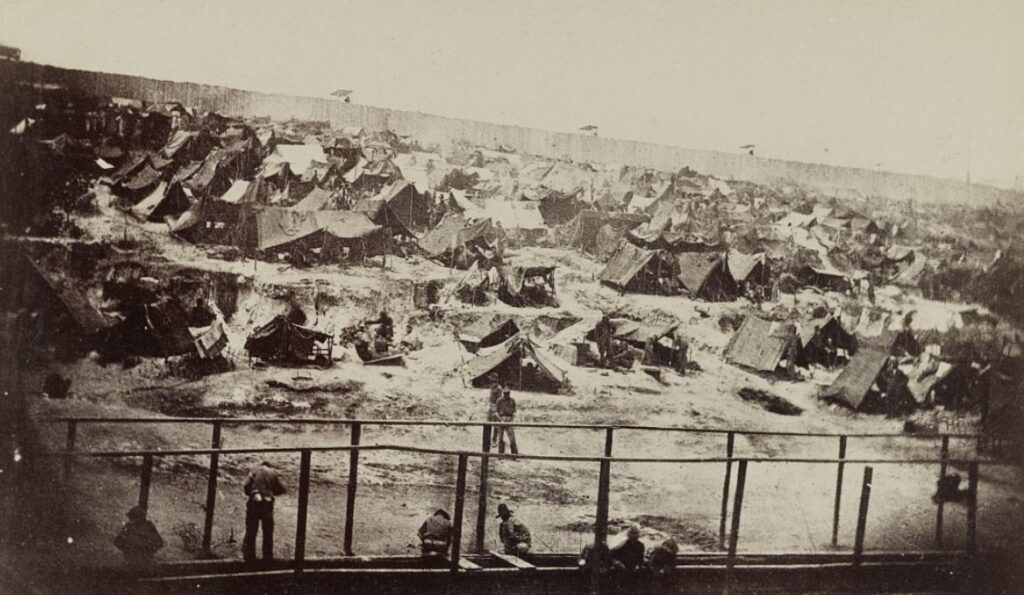
Established in February 1864, Andersonville quickly became a cesspool of human suffering and degradation.
The camp was designed to accommodate a maximum of 10,000 prisoners, but at its peak, it held over 45,000 Union soldiers, crammed into a mere 16.5 acres of ground.
This extreme overcrowding, coupled with inadequate shelter, food, water, and sanitation, created conditions so deplorable that they defy comprehension.
Union soldiers lived in disease-ridden squalor, their surroundings a breeding ground for dysentery, scurvy, malaria, and other deadly afflictions.
Starvation was rampant, with the “shank” soup earning its name from the tiny scraps of meat floating in the inedible gruel – a cruel mockery of sustenance.
Exposure to the elements claimed countless lives during the bitter winters, as the prisoners huddled in makeshift shelters, lacking proper clothing and blankets.

In the final 14 months of Andersonville’s operation, an estimated 13,000 Union soldiers – nearly 30% of the camp’s total prisoners – died.
The dead bodies served as a haunting testament to the depths of depravity to which humanity can sink. Photographs of the survivors, their skeletal frames and hollow eyes shocking the nation, forever etched Andersonville into the collective consciousness as a symbol of the Civil War’s darkest depths.
Andersonville stands as a chilling reminder of the atrocities that can arise during war, where the most fundamental human rights and dignities were stripped away.
2. Elmira Prison Camp
The Union’s Elmira Prison in New York held the ominous moniker “Hellmira”.
Despite being designed for a maximum of 4,000 to 6,000 prisoners, Elmira held a staggering 12,000 Confederate inmates within just one month of opening, leading to extreme overcrowding.
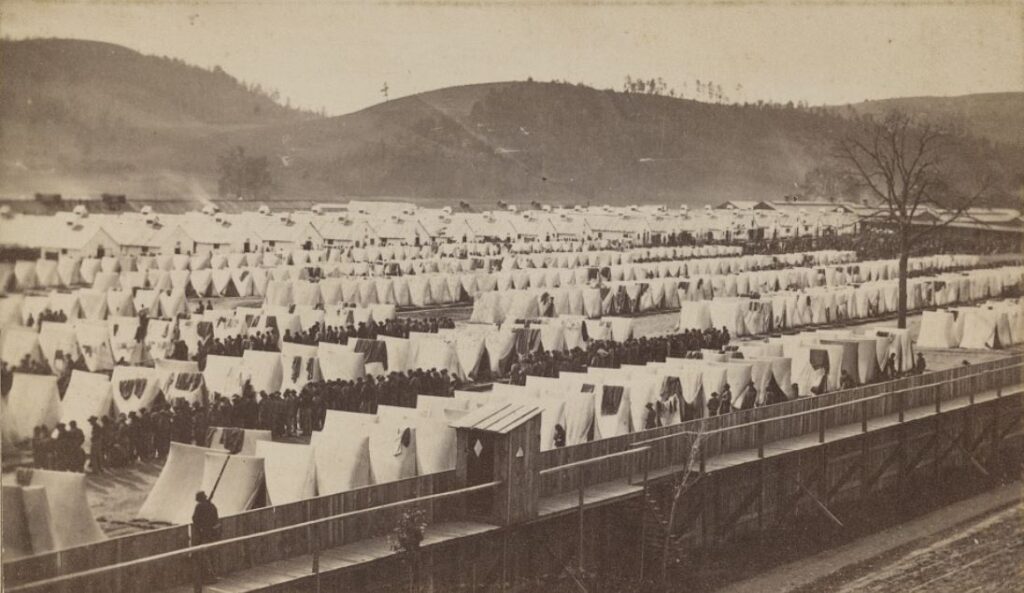
Within the camp’s confines, the flimsy tents and ramshackle shacks offered scant protection from the elements, leaving the inmates exposed to the harsh whims of nature.
Food remained a scarce and unwelcome commodity, with what little sustenance was provided being of such abysmal quality that it could hardly be considered edible.
Medical care proved virtually nonexistent, leaving the ailing and infirm to fend for themselves against the ravages of illness.
It was within this bleak and unforgiving environment that an epidemic of smallpox and other diseases soon erupted, aided and abetted by the putrid water supply that served as a breeding ground for contagion.
Diarrhea and pneumonia, too, ran rampant, their silent specters stalking every corner of the camp, claiming lives with each passing day.
The cruel winter of 1864-65 brought arctic temperatures as low as -18°F. Hundreds of prisoners froze to death or succumbed to disease and starvation, their Southern constitutions unprepared for such brutal conditions.
In the end, roughly 3,000 confederate soldiers died at “Hellmira”. Elmira’s legacy as a site of unconscionable cruelty and mass death ultimately could not be denied.
3. Florence Stockade
Deep in the heart of the Confederacy, the Florence Stockade stood as a grim testament to the depravations of the Civil War.
Established in September 1864 to relieve overcrowding at the notorious Andersonville, this South Carolina hell-hole would soon etch its own bloody chapter into the conflict’s abysmal history of prison camps.
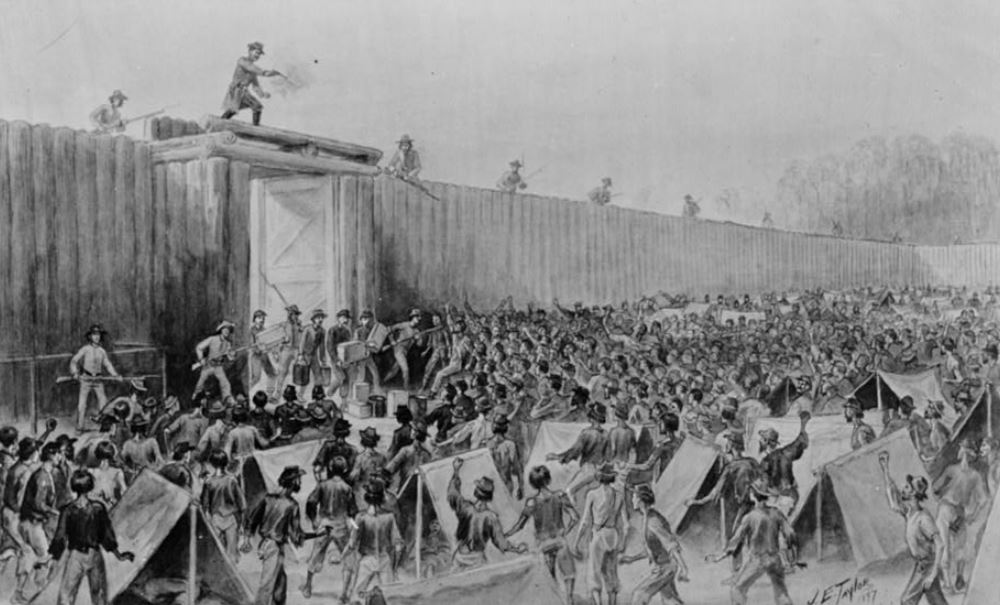
Within months of opening, the stockade held up to 18,000 Union prisoners.
Conditions were appalling – the men huddled together in the open, many sleeping virtually naked and without blankets as supplies dwindled. A profound lack of even basic provisions set the stage for widespread suffering and death.
Under the callous command of Lt. James Barrett, cruelty and murder became commonplace.
The putrid environment acted as a virus’s ally, with rampant disease claiming 20-30 lives per day. By the stockade’s closure in February 1865, a staggering 2,800 Union soldiers had died amid unspeakable degradation. Their mortal remains were unceremoniously consigned to unmarked trenches.
4. Salisbury Prison
Salisbury Prison was established in 1861 within the converted remnants of an abandoned cotton mill. This North Carolina hellhole would etch its name among the conflict’s most notorious houses of horror.
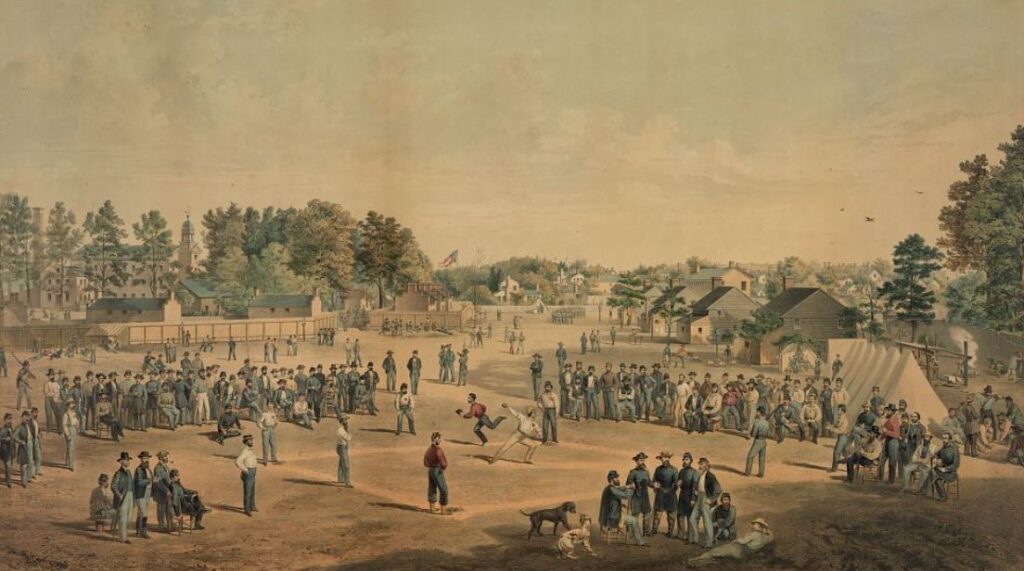
What began as a relatively small holding facility for Union prisoners soon grew as the war raged on. By October 1864, the stockade held a staggering 10,000 inmates – five times its intended capacity.
Rampant overcrowding, coupled with malnutrition, abysmal sanitation, and the compounding ravages of disease transformed Salisbury into a valley of death.
Dysentery, malaria, and other disease cut through the severely weakened population. It is unknown how many inmates died here, but it believed that over 3,800 perished here. Their bodies were consigned to mass graves in a former cornfield.
Initially, the Confederates had simply buried the dead in hastily dug trenches near the prison compound, with no coffins or markers for the fallen
In the aftermath of the Civil War, the grounds where thousands of Union prisoners had been callously consigned to mass graves at Salisbury took on a more hallowed purpose. The former prison site was officially designated as Salisbury National Cemetery, a final resting place befitting the soldiers who had suffered unimaginable cruelties.
5. Point Lookout Prison Camp
While not achieving the same infamy as Andersonville or Elmira, Point Lookout in Maryland could prove equally hellish for its Confederate prisoners.
Established in 1863 to house the thousands captured after Gettysburg, the official “Camp Hoffman” quickly descended into an open-air purgatory of overcrowding, disease, and rampant human misery.
Originally intended for 10,000 inmates, Point Lookout’s population soon swelled to between 12,000 and 20,000 as the exchange of prisoners ground to a halt.
The compound’s 40 acres were soon overwhelmed, with upwards of 16 men crammed into each small tent amid the foul tides of Maryland’s summer swamps. Sanitation was non-existent, paving the way for fever and contagion to reap a grisly toll.
Tales of the camp’s deprivations were widespread – of the 50,000 Confederate soldiers who passed through its gates, nearly 4,000 perished within its wretched confines. An 8% death rate marked Point Lookout as a house of untold hardship measured in human lives and anguished suffering.
When the camp was finally closed, the corpses were unceremoniously consigned to a mass grave. It would take decades for a privately-funded Confederate memorial park to be established alongside the lonely cemetery, its prominent rebel flag fluttering defiantly overhead in honor of the fallen.
Further Reading
If you enjoyed this article, you may be interested to read more about the American Civil War events, or perhaps read about the South’s important victories. Read here for more general American history.


